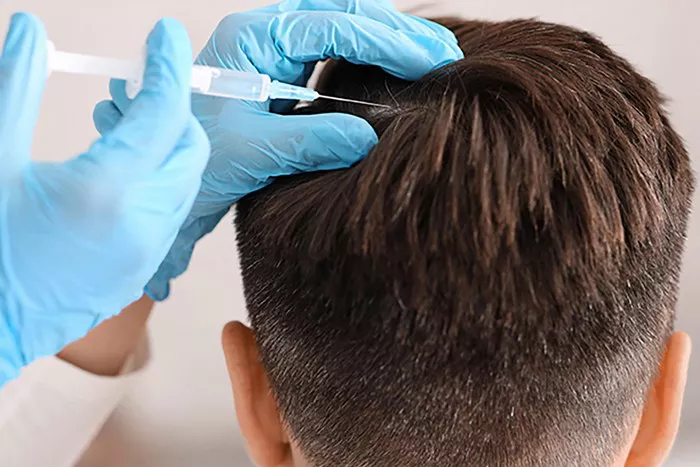Hair loss is a common concern for many individuals, leading them to explore various options for regaining a full head of hair. Two popular choices are hair transplant procedures and hair fibers. Each method has its own set of advantages and drawbacks. Understanding the key differences can help individuals make an informed decision based on their specific needs and preferences.
I. Hair Transplant: A Surgical Solution
Hair transplant is a surgical procedure that involves removing hair follicles from one part of the body (usually the back of the scalp) and transplanting them to areas with thinning or no hair. This method is known for providing long-lasting results, as the transplanted hair follicles continue to grow naturally. The two main techniques used in hair transplant procedures are Follicular Unit Transplantation (FUT) and Follicular Unit Extraction (FUE).
FUT involves removing a strip of skin with hair follicles from the donor area, while FUE involves extracting individual hair follicles directly. Both methods require skilled surgeons and have their own recovery periods. However, the results are generally permanent, making hair transplant a popular choice for those seeking a more permanent solution to hair loss.
Pros of Hair Transplant:
Permanent results
Natural-looking hair
Minimal maintenance required once healed
Cons of Hair Transplant:
Surgical procedure with associated risks
Higher initial cost compared to other options
Recovery period with potential for discomfort
II. Hair Fibers: A Non-Surgical, Temporary Fix
On the other hand, hair fibers provide a non-surgical and instant solution to hair thinning. These fibers are typically made from keratin or other natural materials and are sprinkled or sprayed onto the existing hair, attaching to individual strands to create the appearance of thicker, fuller hair. While this method offers immediate results without the need for surgery, it is a temporary solution that requires regular application.
Pros of Hair Fibers:
Non-surgical and non-invasive
Instant results
Wide range of products available
Cons of Hair Fibers:
Temporary solution
Regular application required
May not withstand certain activities such as swimming or heavy sweating
III. Which is Better: Making the Right Choice for You
The decision between a hair transplant and hair fibers ultimately depends on individual preferences, budget, and desired outcomes. If someone is looking for a permanent solution and is willing to undergo a surgical procedure, a hair transplant may be the better choice. However, for those seeking a non-invasive and temporary solution with immediate results, hair fibers may be the preferred option.
It’s essential to consult with a qualified hair restoration specialist to assess individual needs and discuss the most suitable option. Factors such as the extent of hair loss, overall health, and budget should be taken into consideration when making this decision.
IV. FAQs on Hair Transplant and Hair Fibers:
1. Is a hair transplant painful?
Hair transplant procedures are performed under local anesthesia, so patients typically experience minimal pain during the surgery. Post-surgery, some discomfort may be present, but it is usually manageable with prescribed medications.
2. How long does it take to see results from a hair transplant?
While initial results may be visible within a few months, it can take up to a year or more to see the full outcome of a hair transplant as the transplanted hair follicles gradually grow and integrate.
3. Are there any side effects of using hair fibers?
In general, hair fibers are safe to use, but some individuals may experience scalp irritation or allergic reactions. It’s advisable to test a small amount of the product on a small area before regular use.
4. Can I combine hair transplant and hair fibers for better results?
Yes, some individuals choose to combine both methods. A hair transplant provides a permanent solution, while hair fibers offer an instant cosmetic improvement. This combination can create a more immediate and visually satisfying result during the initial stages of hair transplant recovery.
5. Are hair fibers noticeable or detectable?
When applied correctly, hair fibers blend seamlessly with existing hair, making them difficult to detect. Choosing the right color that matches natural hair and applying the fibers evenly are key factors in achieving a natural look.
In conclusion, both hair transplant and hair fibers have their merits, and the choice depends on individual preferences, goals, and circumstances. Consulting with a hair restoration specialist is crucial to determine the most suitable option for achieving the desired outcome.

